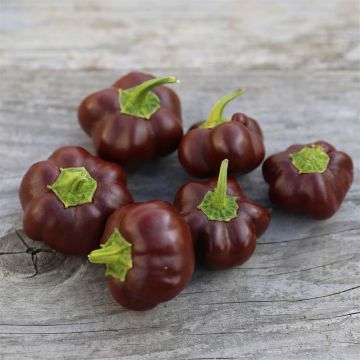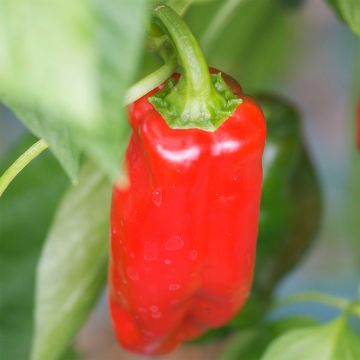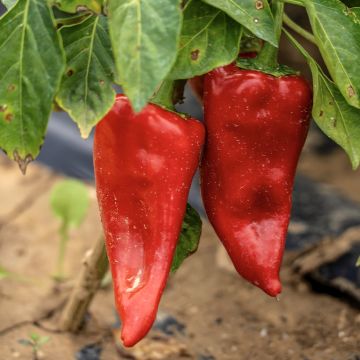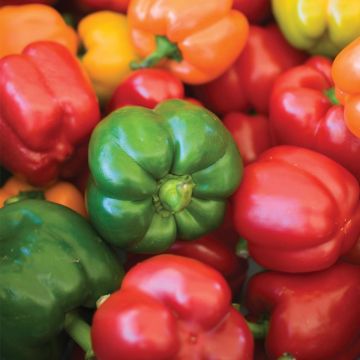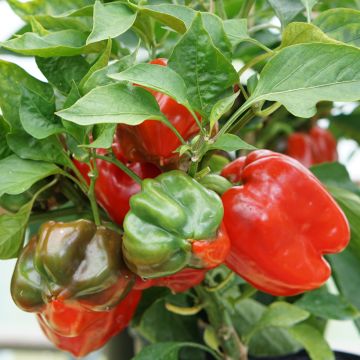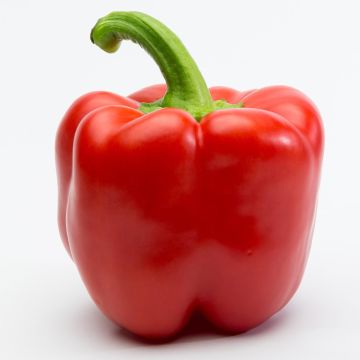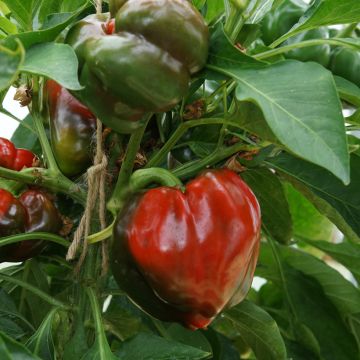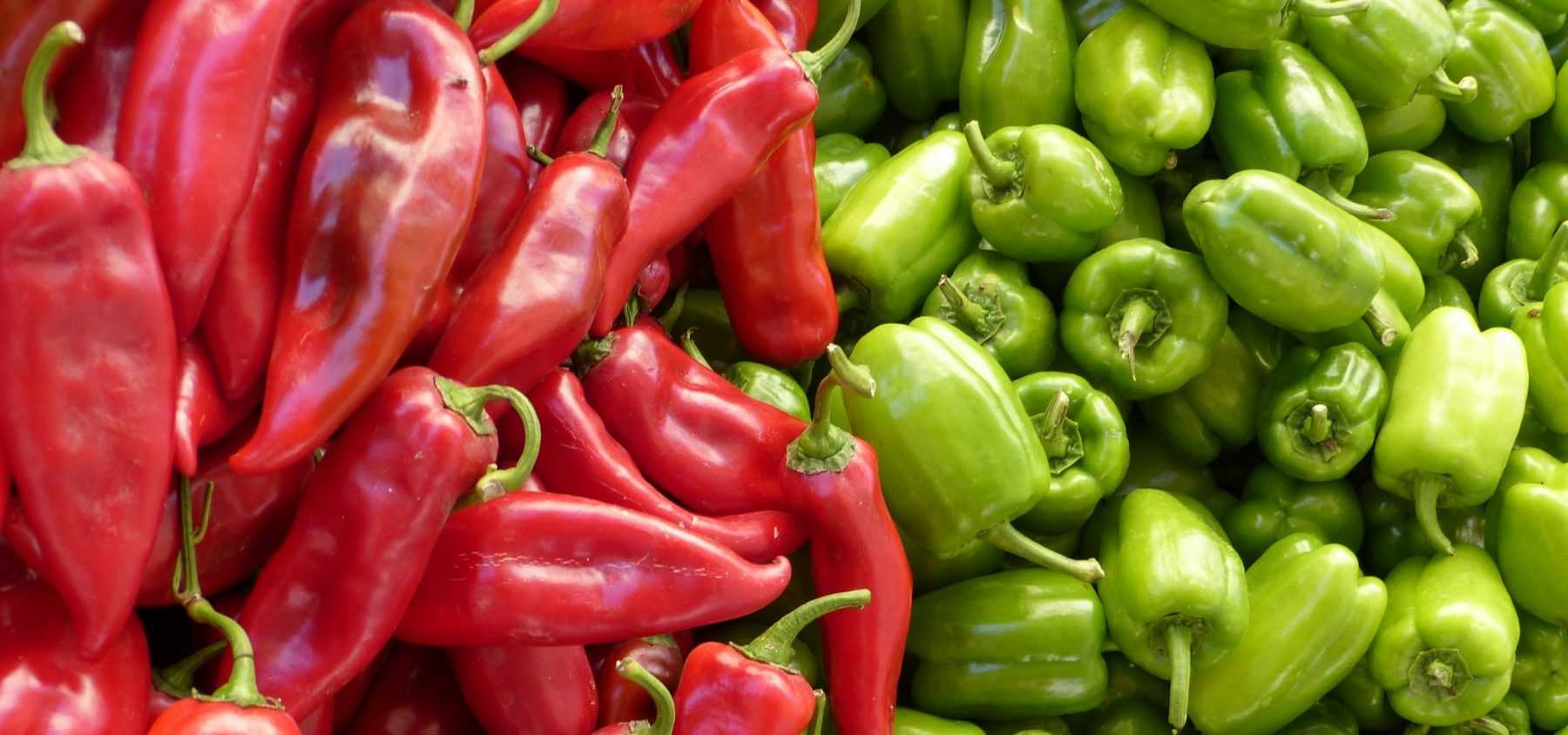
Growing Chillies and Peppers Successfully
in the vegetable garden
Contents
Chillies and peppers are fruit-vegetables often grown in the vegetable garden, with a vast array of varieties distinguished by their colour and flavour. They belong to the Solanaceae family, like tomatoes, and are part of the Capsicum genus. The bell pepper (Capsicum annum) is actually a mild chilli, cultivated for its large, non-spicy fruits that can be incorporated into many dishes. These plants require warmth and sunshine to thrive and produce abundant fruit. Discover all our tips for successful cultivation, from sowing to harvest!
Where to plant chillies and peppers?
Chillies and peppers thrive in rich, well-draining soils and require warmth and plenty of sunlight to fruit. They should be planted in full sun, ideally sheltered from cold winds. Carefully observe your garden to assess sunlight exposure and choose the most suitable spot accordingly. In cooler regions, they benefit from being grown under cover.
In the vegetable garden, they pair well with cabbage, carrots, and also with French marigolds which appear to stimulate their production. However, avoid planting them near other nightshades such as aubergines, potatoes or tomatoes.
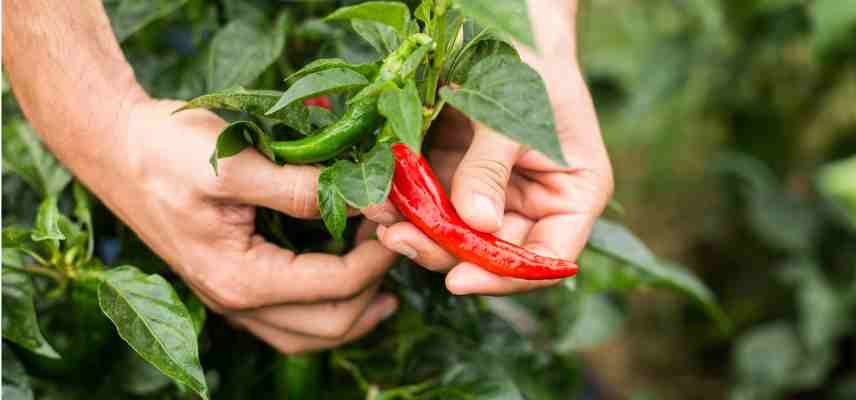
Read also
Sowing with heat or on a hotbedWhen and how to sow peppers and chillies?
Sowing takes place in March, but plants intended for greenhouse cultivation can be prepared as early as February. It is carried out indoors in warmth or in a heated shelter, with the optimal temperature being 25°C. Using a heated propagator or placing seed trays on a radiator improves germination.
- Fill pots or seed trays with special seed compost.
- Sow the seeds on the surface and cover them with compost. They should be buried about 1 cm deep.
- Water gently.
- Place the pots in a bright location, such as near a window or under a cold frame.
- Transplant the young seedlings as soon as they have their first true leaves and reach about 7 cm in height.
Discover other Pepper seeds
View all →Available in 1 sizes
Available in 1 sizes
Available in 1 sizes
Available in 1 sizes
Available in 1 sizes
Available in 1 sizes
Available in 1 sizes
Available in 1 sizes
Available in 1 sizes
When and how to plant them?
Planting in the garden takes place when all risk of frost has passed, usually after mid-May, or even June in cooler regions, as chillies and peppers only develop above 15°C.
- Prepare the soil by weeding and loosening it. Don’t hesitate to add compost or manure to enrich the soil.
- Dig a planting hole.
- Remove the plant from its pot.
- Plant it in the centre of the hole.
- Fill in the hole and firm gently.
- Water thoroughly.
- Consider adding a layer of organic mulch.
If planting several plants, space them 50 to 60 cm apart.
You can also grow chillies and peppers in large pots on your terrace or balcony.
Staking the plants isn’t essential, but is highly recommended in windy locations.
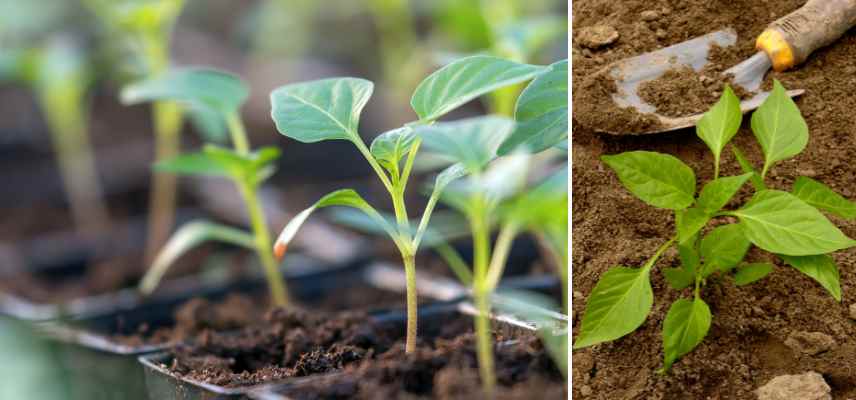
Read also
Growing aubergines successfullyHow to care for them?
Unlike tomatoes, chillies and peppers do not require pruning.
Their maintenance involves weeding, hoeing and occasional watering. These tasks will be reduced if you mulch the soil with thin successive layers of pre-dried grass clippings or dead leaves, for example. This protective layer will also help retain soil moisture and reduce the frequency of watering.
Diseases and pests
Peppers and chillies are rarely affected by pests, apart from aphids which can be easily eliminated by spraying with water mixed with black soap.
In terms of diseases, they can suffer from the same ailments as tomatoes (blight, anthracnose), though much less frequently.
To prevent these issues:
- Avoid wetting the foliage when watering,
- Respect planting distances,
- If necessary, apply Bordeaux mixture sprays.
When to harvest them?
Peppers and chillies are harvested when ripe, from mid-August to late October, approximately five months after sowing. Peppers can be eaten while still green, but it’s when they are fully ripe and have reached their expected colour that they offer their full flavour.
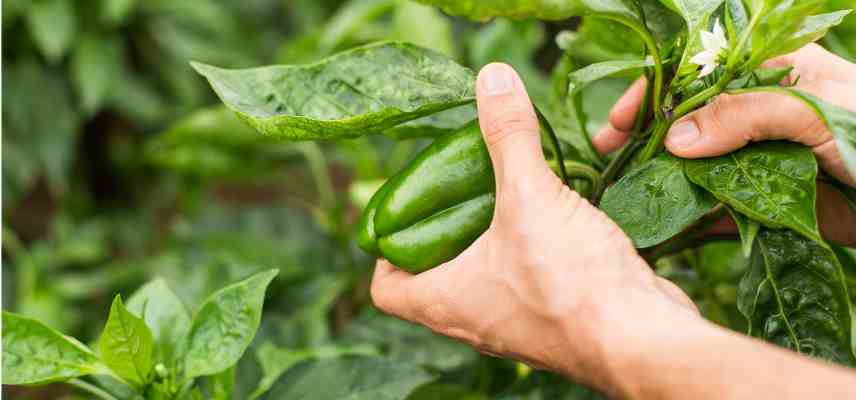
- Subscribe!
- Contents


































